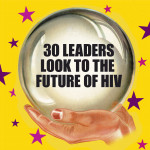Lazarus Syndrome
More life!” That’s what AIDS-ravaged Prior Walter pleaded for at the end of the early-’90s Broadway epic Angels in America. A few years later, thanks to protease combos, that’s just what many PWAs had won—along with massive debt they’d never thought they’d live to owe, treatment “complications” often as nasty as AIDS itself, and the riddle of rebuilding a life after resigning oneself to death.
It was called Lazarus Syndrome, and by 1997, many POZ readers were already too familiar with the phenomenon, dramatized in “Lazarus,” a column we launched late that year. Comeback kid Peter Kurth wrote: “If my own experience means anything, Lazarus himself must sometimes have felt he was better off moldering in the grave…. Resurrection isn’t all it’s cracked up to be.”
That same year, POZ looked at newly “healthy” HIVers pressured by their insurance companies to ditch disability and go back to work—but who were often debilitated by meds-related fatigue or diarrhea, not to mention fear that their luck wouldn’t hold out. And many Lazari awoke to a financial nightmare. Remembering his dramatic mid-’90s revival, POZ contributing editor Dick Scanlan says: “I was 35 years old, with $29,000 of credit card debt—not much less than my annual income. I had to suddenly grow up, make up for lost time and organize my life. The pain of [acknowledging that] was unbelievable.”
But not everyone was complaining about leaving the tomb. In POZ, Scott O’Hara wrote wryly of missing the hospital (once “practically a social club for me”) because “I’m busy hiking or wrestling or biking—impossible for me a year ago…. I don’t feel any of this famous malaise,” he continued, scoffing the Lazarus lament, “this uncertainty of what to do next. My role is clearly defined: As a writer, I’m here to tell stories.”
Still, Lazari had often acquired so much drug resistance that the virus—and fatal complications—broke through. Within six months of his POZ piece, O’Hara was dead. Scanlan was among the lucky. He’s been healthy since his rebound and, in 2002, saw his Thoroughly Modern Millie, a project he’d begun when ill, win the Tony for best musical on Broadway, where it’s still a hit. “I’ve had moments where I’ve thought it would have been so much easier if I had just died,” he says. “Then I think about the people I’ve lost, what they would have given for another eight years—and I snap out of it.”
Man of the Year: Andrew Sullivan
Why is anger a dirty word for you? Has the Catholic Church pacified your soul? How do you think you got infected? Such were the questions author-activist Larry Kramer fired at Andrew Sullivan, the HIV positive author of the newly published gay manifesto Virtually Normal, when they squared off for POZ in 1997. Only when the intensely religious Sullivan recounted how, upon learning he was positive, in 1993, “there were honestly 15 minutes of my life when I thought God was evil,” did he silence Kramer—someone “I adore and respect,” he recently reassured POZ.
Sullivan has since published Love Undetectable, his essays on AIDS and friendship, and Same-Sex Marriage: Pro and Con, others’ essays on a movement he’s long and loudly supported—and one whose current prominence in the courts and the headlines leaves him “exhilarated and moved and terrified,” he says. “To watch gay people get this much empowerment is fucking marvelous.”
But the Catholic, conservative contrarian has frequently found himself at odds with the gay community—or at least its p.c. press, which in 2001 nastily exposed an ad he’d posted on the raw-sex hookup site www.barebackcity.com. He’s still on the Web, though, claiming that his blog, www.andrewsullivan.com, gets up to 70,000 visits a day. And though he’s been public with his HIV since 1996, don’t expect the former New Republic editor to bash Big Pharma the way many HIVers do: “Free markets are our friends and so are the pharmaceutical companies, for all their faults.” Still, he’s happily been on a drug break since 2001. “My CD4s are still over 500, so I’m obviously blessed.”
Love helps, too. “I’ve been with a great and wonderful man for coming up three years,” he says. “We’re in DC and Chicago. Long distance is good and bad, but we’re hoping to end that.” Hmm—do we see a big church wedding?
’97 Personal Best
Longtime Companion by Greg Lugliani
When I inherited Joe from a friend, he wouldn’t come near me. Then one day, after licking the Nine Lives off his plate, he meowed until I picked him up. How the mighty had fallen. My fearsome former stray was becoming a pampered pussycat.
Joe meowed for me to hold him the night I came home from an HIV-testing center with my positive result. It was 1988. As he purred loudly in my arms, his love made even a death sentence seem OK. And of course, life went on. Joe survived two ex-boyfriends and five moves. In 1995, when I took my first dose of AZT and 3TC, Joe eyed me greedily—he equated pills with food.
Still, I was certain my old black cat would outlive me. But as my health held steady, Joe lost weight and energy. He had FIV, feline AIDS. By March 1997, Joe couldn’t walk, eat, drink—or meow. The evening before he was to be put to sleep, I lay down beside him. It was still dark when I awoke to his rasping breathing. I stroked him for a few minutes, then heard his final gasp. That was it. Another struggle over. Joe’s death reminded me just how distant those painful years he helped me through had become. But even now, I sometimes hear Joe, meowing, saying, “Hold me.”
Greg Lugliani wrote POZ’s “Nurse Know It All” column from 1999 to 2003.
Celebrity BUZZ
POZ’s November “Brit” issue (guest-edited by porn star/author Aiden Shaw) boasts a cover interview with Elizabeth Taylor—an honorary HIVer by way of her fearless and peerless activism.
In August, Princess Diana dies in a car crash at 36. The “people’s princess”—one of the first, most influential icons to tackle global AIDS hands-on—is mourned by millions of HIVers.
Hey! Days
February
For the first time since the AIDS crisis began, the CDC announces that the number of PWA deaths in the U.S. has dropped—a testament to HAART’s effectiveness.
April
In a precedent-setting case, 19-year-old African-American Nushawn Williams is sentenced to prison for infecting a half-dozen white girls with HIV, fueling the trend to criminalize HIVers who transmit the virus. A 2000 POZ investigation turns up the 101 HIVers prosecuted for not disclosing. Few infected their partners.
May 18
President Bill Clinton announces his goal of discovering an HIV vaccine. After the ensuing media blitz (and bucks, including a blessed Bill Gates donation), 5,000 volunteers for the first trial. Many years and attempts later, only one vaccine—gp120, made by VaxGen—reaches Phase III.
July 11
The CDC announces that “deep kissing” may have infected a woman with HIV. The ensuing hysteria centers, thankfully, on her partner’s reportedly bleeding gums.
Also...
By year’s end, WHO says that 30 million—more than Australia’s population— are living with HIV—sans meds.






Comments
Comments